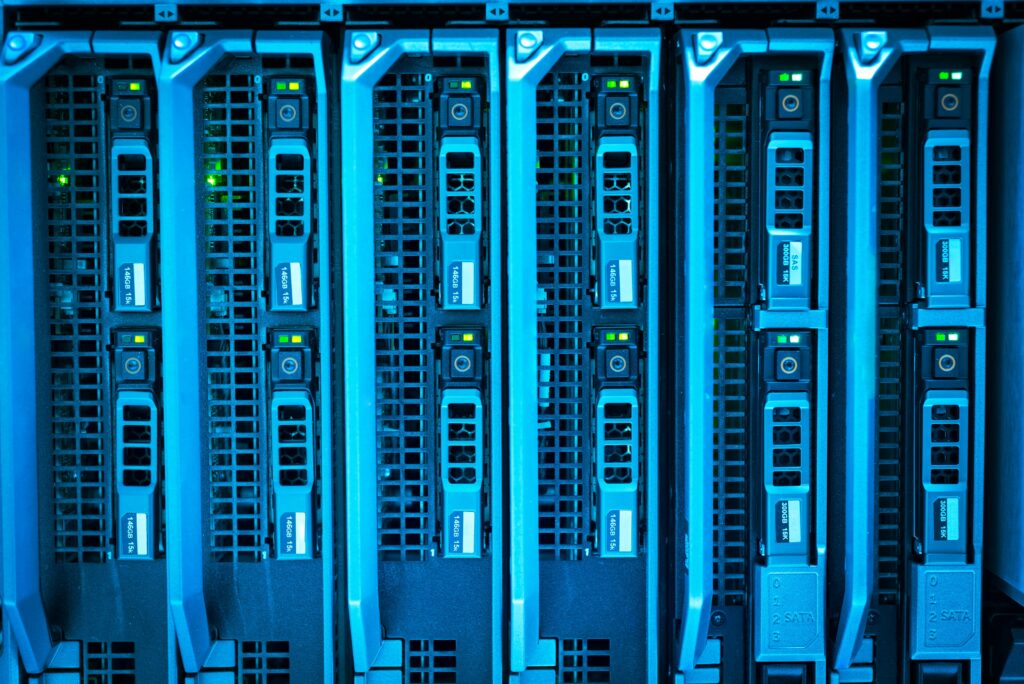New vs 2nd-Hand Servers - What to consider.

In today’s rapidly evolving technological landscape, businesses are constantly seeking ways to optimize costs while maintaining performance and reliability. One of the options that have gained traction is the use of second-hand or refurbished servers. While this approach offers several advantages, it also comes with its own set of risks that need to be carefully considered. In this blog post, we’ll explore the key benefits and potential drawbacks of using second-hand servers, helping you make an informed decision.
Benefits of Using Second-Hand Servers
Cost Savings The most obvious benefit of purchasing second-hand servers is cost reduction. Refurbished servers are typically available at a fraction of the price of new hardware. This can be especially beneficial for startups and small to medium-sized businesses that need to stretch their IT budget. In many cases, you can acquire high-performance equipment at a significantly lower cost, enabling you to allocate funds elsewhere in your business.
Sustainability Buying second-hand servers is an environmentally friendly choice. By reusing equipment, you’re helping reduce e-waste, which is a growing concern in today’s tech-driven world. Extending the life cycle of servers means fewer resources are needed to manufacture new equipment, which can reduce your business’s environmental footprint. Adopting refurbished technology aligns with corporate social responsibility goals and sustainability initiatives.
Proven Reliability Second-hand servers, especially those that are factory refurbished or come with a warranty, have often been thoroughly tested for reliability. In some cases, you may be acquiring enterprise-grade hardware that was only in use for a short time or that was pulled from data centers that regularly upgrade. Such hardware is built to last and can still deliver strong performance for many years.
Faster Deployment New servers often require lead times for configuration, testing, and delivery. In contrast, second-hand servers are typically available for immediate purchase and deployment. This faster turnaround can be essential for businesses that need to scale up their infrastructure quickly or for temporary projects that require additional server capacity.
Upgradeable and Customizable Many second-hand servers come from large enterprises or data centers and may already be configured with additional features such as extra storage or higher-end processors. This can save both time and money if you need a more robust solution without starting from scratch. Additionally, some servers allow for further upgrades, providing flexibility as your business grows.
Risks of Using Second-Hand Servers
Shorter Lifespan One of the most significant risks is the potential for a shorter remaining lifespan compared to new hardware. Since the server has already been used, its components may have experienced wear and tear. This increases the likelihood of hardware failure, which could lead to downtime, costly repairs, or the need for a premature replacement.
Limited Warranty and Support Second-hand servers may not come with the same level of warranty or support as new systems. While some refurbished servers include warranties, they are typically shorter in duration or more limited in scope. Without a comprehensive warranty, businesses may face higher maintenance costs if parts fail, and they may struggle to find reliable support for older hardware.
Outdated Technology Technology evolves rapidly, and second-hand servers might not support the latest advancements. Older hardware could be incompatible with newer software, operating systems, or security protocols, potentially limiting performance or leaving your system vulnerable to cybersecurity threats. Additionally, you may miss out on energy efficiency improvements that newer models offer, which could increase long-term operating costs.
Hidden Defects Even with thorough testing, there is always a chance that second-hand servers may have hidden defects or degraded components. These issues may not become apparent until the server is under heavy load or has been in use for an extended period. It’s essential to purchase from reputable vendors who thoroughly refurbish and test the equipment to minimize the risk of unexpected failures.
Security Risks Purchasing second-hand servers can come with security risks if not properly wiped before resale. Previous configurations or even data could be lurking on the system, presenting potential privacy or compliance issues. Always ensure that any refurbished hardware has undergone a complete reset, with all data properly erased and security settings reconfigured to your standards.
Conclusion
Second-hand servers offer a compelling value proposition for businesses looking to cut costs and enhance sustainability without sacrificing performance. However, they do come with potential risks, including shorter lifespans, limited support, and potential security vulnerabilities. To minimize these risks, it’s crucial to work with reputable vendors that offer refurbished hardware with warranties and certifications.
Ultimately, second-hand servers can be an excellent option for businesses that carefully evaluate their needs, conduct thorough due diligence, and are prepared to invest in ongoing maintenance. With the right approach, you can enjoy the benefits of significant savings while maintaining the reliability and performance your business needs to thrive.

